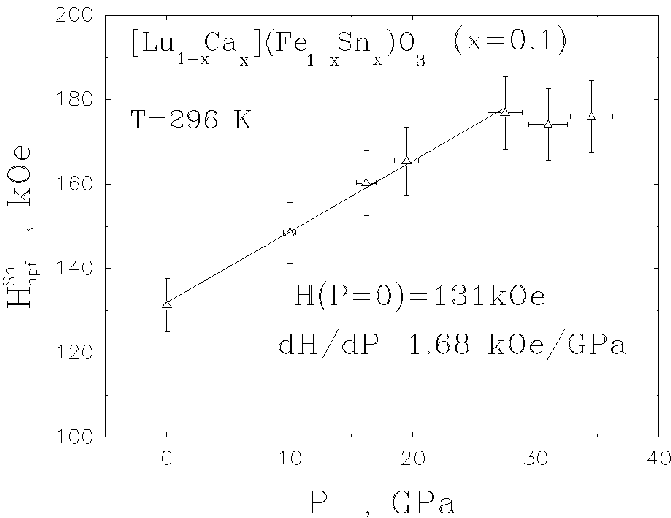
Mossbauer High Pressure Research Group
Personalities:
Dr. George N. Stepanov,
Head of Mossbauer High Pressure Group,
Institute for High Pressure Physics,
Troitsk, 142092, RUSSIA
Tel: (095) 334-0408
Fax: (095) 334-0012
E-mail: stgeorg@ns.hppi.troitsk.ru
Research interests:
Dr. Alexander G. Gavriliuk,
Researcher,
Institute for High Pressure Physics,
Troitsk, 142092, RUSSIA
Tel: (095) 334-0736
Fax: (095) 334-0012
E-mail: alexg@ns.hppi.troitsk.ru
Selected publications:
Resent investigations:
Experimental results for LuFeO3 and [Lu1-xCax](Fe1-xSnx)O3 (x=0.1).
A.G. Gavriliuk, G.N. Stepanov, V.A. Sidorov, I. Trojan, I.S. Lyubutin.
Mossbauer high pressure measurements at Sn-119 nuclei in [Lu1-xCax](Fe1-xSnx)O3 (x=0.1).
HP MS experiments have been carried out in diamond anvils with rhenium gasket. The hole in the gasket was filled by the powder of the sample. The average diameter of working surface of the anvil ~600m. The mossbauer spectra could be split up three subspectra - two magnetic and one nonemagnetic singlet. The pressure dependence of the maximal supertrasferred hyperfine magnetic field is shown in the Fig. 1.

Fig. 1. Pressure dependence of the maximal supertrasferred hyperfine magnetic field on Sn-119 in
[Lu1-xCax](Fe1-xSnx)O3 (x=0.1) at room temperature.
Optical absorption edge in [Lu1-xCax](Fe1-xSnx)O3 (x=0.1) at high pressure.
Measurements of the optical absorption edge have been carried out in diamond anvils with rhenium gasket. The silicon fluid was used as a pressure medium. The sample have been prepared from powder by the compacting between diamond anvils and have the thickness approximately several m. The average diameter of working surface of the anvil ~300m. The intensities of transmitted light for different pressures are shown in the Fig.2. The pressure dependence of the absorption edge is shown in the Fig. 3.
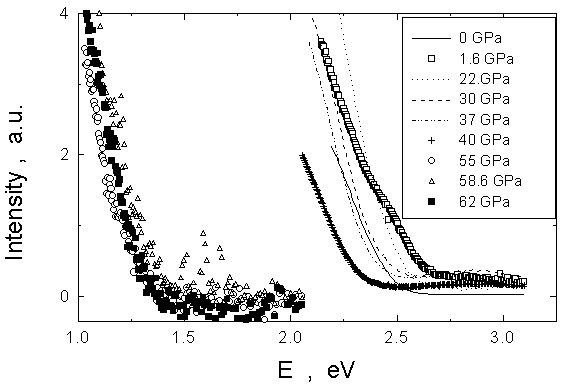
Fig. 2. Intensity of the transmitted light near absorption edge in [Lu1-xCax](Fe1-xSnx)O3 (x=0.1) at room temperature and at different pressures.
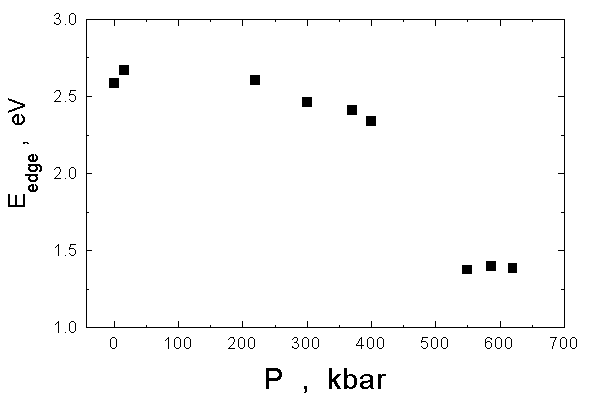
Fig. 3. Pressure dependence of absorption edge in [Lu1-xCax](Fe1-xSnx)O3 (x=0.1) at room temperature.
Pressure dependence of Neel temperature for LuFeO3 measured by differential thermal analysis.
Measurements of the Neel temperature (TN) have been carried out in "toroid" hydrostatic high pressure camera. The ethanol-methanol mixture was used as a pressure medium. The sample have been prepared from the single crystal. In the Fig. 4. is shown typical DTA signal at high pressures for LuFeO3. The pressure dependencies of the TN at pressure increase and decrease are shown in the Fig. 5.
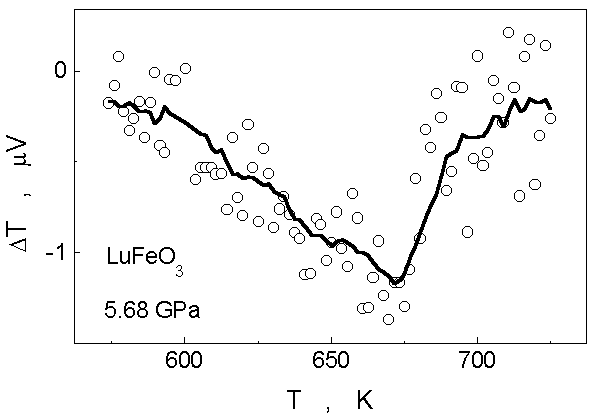
Fig. 4. DTA signal at pressures 5.68 GPa for LuFeO3. Open circles: experimental points; solid line: smoothed curve to determine the value of the TN .
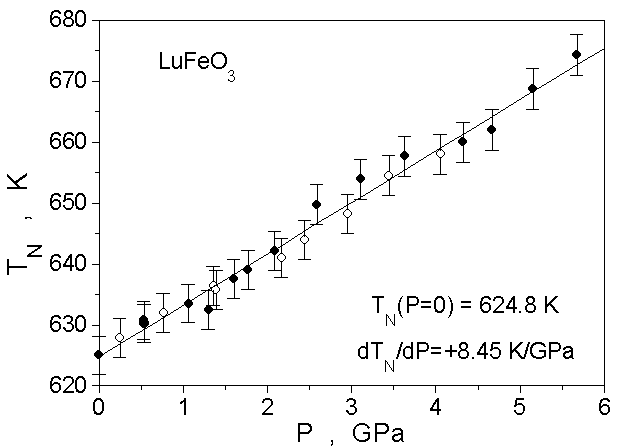
Fig. 5. The pressure dependencies of the TN at pressure increase (solid circles) and decrease (open circles) in LuFeO3.